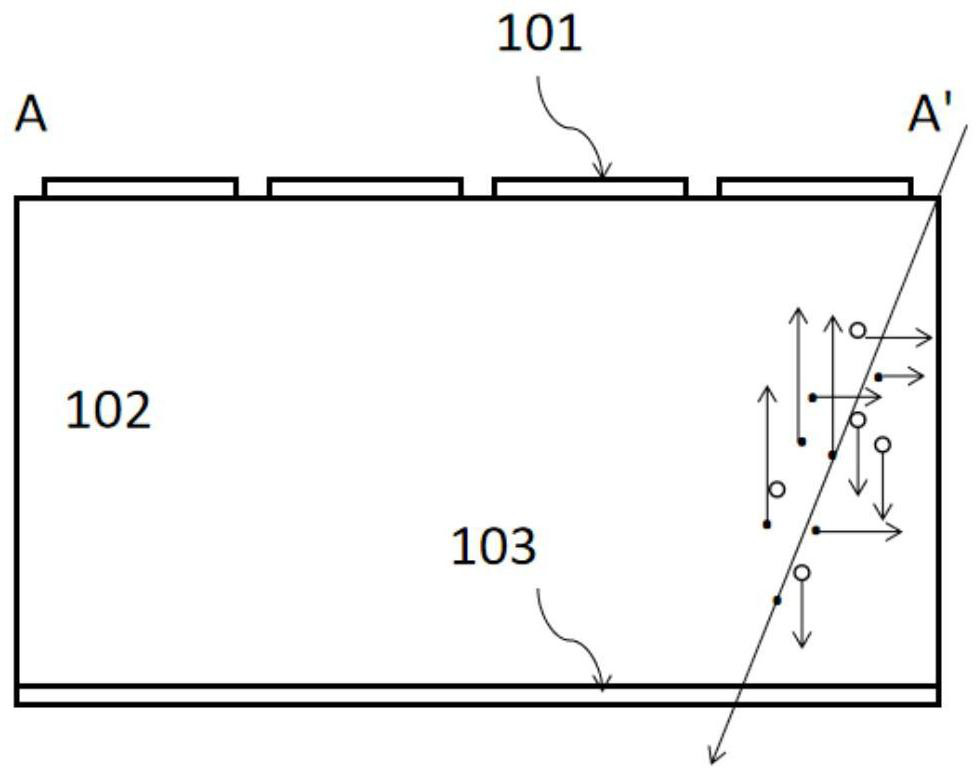CdZnTe radiation detector
A technology of radiation detectors and crystals, applied in the field of radiation detection, can solve the problems of affecting electrode collection, affecting charge collection efficiency, reducing counting statistics or energy spectrum resolution performance, etc., to achieve the effect of enhancing performance and improving charge collection efficiency
- Summary
- Abstract
- Description
- Claims
- Application Information
AI Technical Summary
Problems solved by technology
Method used
Image
Examples
Embodiment 1
[0032] see Figure 5 , the embodiment of the present invention is used to provide a CdZnTe radiation detector, including a CdZnTe crystal 2 . The CdZnTe crystal 2 is columnar, and the CdZnTe crystal 2 is an intrinsic state or a P-type semiconductor. The intrinsic state means that the CdZnTe crystal 2 is not doped with any substance, and the P-type semiconductor means that the CdZnTe crystal 2 is a semiconductor dominated by positively charged holes, and pure silicon is doped with trivalent elements boron, aluminum or Formed by doping impurities containing trivalent elements.
[0033] An anode 1 is arranged on one bottom surface of the CdZnTe crystal 2, and a cathode 3 is arranged on the other bottom surface, and an N-type heavily doped region 4 is arranged at a position corresponding to each side, and the N-type heavily doped region 4 is for passing through the side facing CdZnTe crystal 2 is formed by doping impurity ions. Specifically, the N-type heavily doped region 4 is...
Embodiment 2
[0042] This embodiment is used to provide a kind of CdZnTe radiation detector, such as Figure 7 As shown, the CdZnTe crystal 2 is included, and the CdZnTe crystal 2 is columnar.
[0043] An anode 1 is arranged on one bottom surface of the CdZnTe crystal 2, and a cathode 3 is arranged on the other bottom surface, each side is covered by an insulating layer 6, and a metal electrode 7 is arranged on the insulating layer 6, and the metal electrode 7 is negatively biased. The insulating layer 6 can be silicon oxide, silicon nitride, aluminum oxide and other materials that can make good contact with the CdZnTe crystal 2 .
[0044] During specific implementation, when the incident particles are incident on the CdZnTe crystal 2, a large number of electron carriers and hole carriers will be excited in the CdZnTe crystal 2, and the anode 1 is charged with a zero potential, and the cathode 3 is charged with a negative high voltage. Under the action of the electric field, the hole carri...
PUM
 Login to View More
Login to View More Abstract
Description
Claims
Application Information
 Login to View More
Login to View More - R&D Engineer
- R&D Manager
- IP Professional
- Industry Leading Data Capabilities
- Powerful AI technology
- Patent DNA Extraction
Browse by: Latest US Patents, China's latest patents, Technical Efficacy Thesaurus, Application Domain, Technology Topic, Popular Technical Reports.
© 2024 PatSnap. All rights reserved.Legal|Privacy policy|Modern Slavery Act Transparency Statement|Sitemap|About US| Contact US: help@patsnap.com










